17 Mesmerizing Jackson Pollock Paintings To Know in 2025
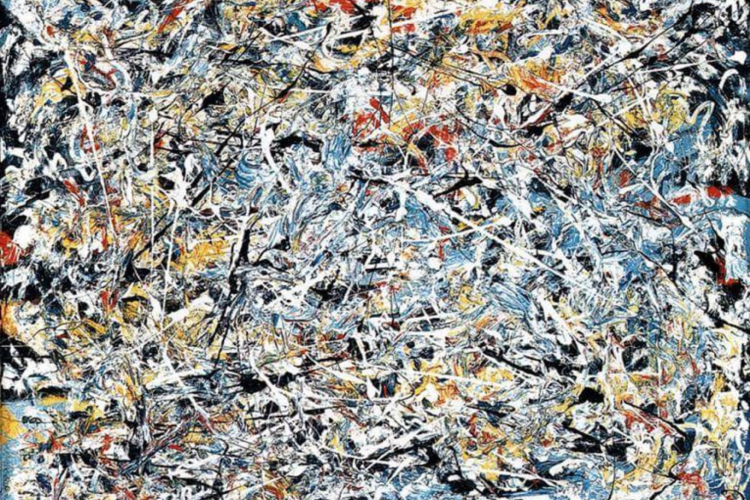
Jackson Pollock paintings push the bounds of expressionism and leave a lasting mark on the global art community. However, these spunky blasts of color on canvas aren’t all Pollock is. This fascinating artistic and innovator painted in many styles and led a more complicated life than many remember today.
Discover the life story of Jackson Pollock, Jackson Pollock painting prices and some of his best (and least) known works. You don’t have to be an art critic to appreciate these fantastic paintings.
Feature image via jackson-pollock.org
Jump to Section
Who Was Jackson Pollock?
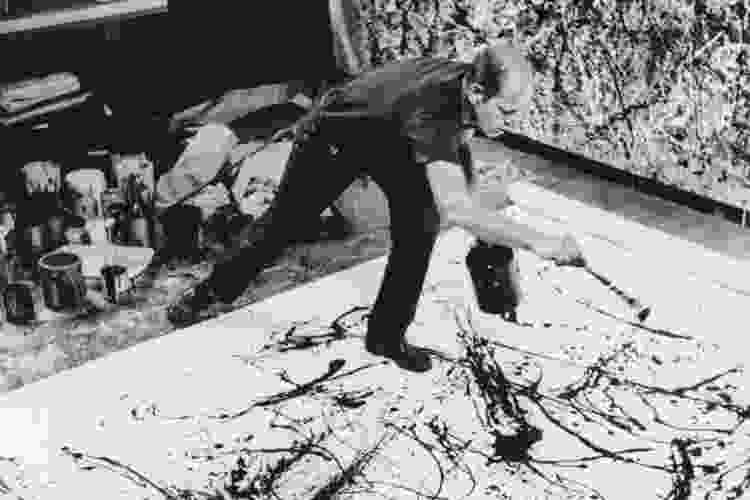
Jackson Pollock (January 28, 1912 — August 11, 1956) was a key figure in Abstract Expressionism, known for his innovative "action painting" technique. His dynamic, spontaneous painting techniques revolutionized American art in the late 1940s and early 1950s.
Pollock grew up in Arizona and California, where his potential (and his siblings' artistic potentials) were nurtured in childhood. The artist moved to New York in 1930 to study with his brother Charles at the Art Students League under Thomas Hart Benton, an opponent of European Modernism. Pollock absorbed Benton's emphasis on vertical compositions, which later shaped his artistic breakthroughs.
Pollock’s work drew from a range of sources, including Navajo sand painting, Asian calligraphy, Picasso’s violent imagery and his personal revelations from Jungian psychotherapy. During the 1930s and 1940s, Pollock's style evolved and the breakthrough Jackson Pollock paintings came with his "poured" paintings, created by dripping and flinging paint onto canvases, which received critical acclaim from major art figures. Pollock's radical technique and personal, uncompromising commitment to his art impressed his peers and influenced future generations of artists.
What caused Jackson Pollock's death? Sadly, despite his success, Pollock struggled with psychological disease and alcohol use disorder (AUD), which culminated in his tragic death in a car crash in 1956. Today, he is remembered not only as one of the first American painters to gain international recognition but as a master of modern art.
What do Jackson Pollock's paintings mean?
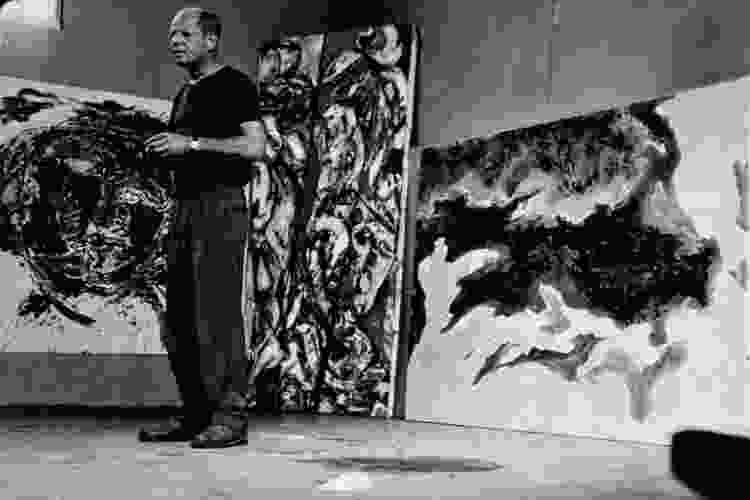
Like many famous paintings, much of Pollock's works are open to interpretation. His paintings are meant to evoke a sense of raw emotion, movement and chaos. About one of his works Pollock said, “My painting has a life of its own. I try to let it come through.” At times, his works seem to embody the very life force of nature, while at others, they convey a sense of human entrapment — the feeling of being stuck within your body, your troubled mind and the unsettling modern world.
However, Pollock paintings, like Picasso paintings, Norman Rockwell paintings and even the great Bob Ross, can be interpreted as you like. Some see a Jackson Pollock action painting as an object, some see it as the feeling of chaos and some just see it as paint splatter on canvas. Jackson Pollock paintings mean whatever you want them to.
What was Jackson Pollock's most famous painting called?
There isn’t one single Jackson Pollock painting that gets the title of "most famous." However, some of his most famous works are Lavender Mist, which represents his abstract work well, and Shimmering Substance, which is one of his first completely abstract works (numbers 6 and 14 in this list).
A better question is maybe how much is a Jackson Pollock painting worth? The Jackson Pollock painting prices vary, but his work often sells at auction for millions of dollars. In 2006, a Jackson Pollock painting worth $140 million, No. 5, 1948, became the world's most expensive painting going to an undisclosed buyer.
Top Jackson Pollock Paintings
1. The She-Wolf (1943)
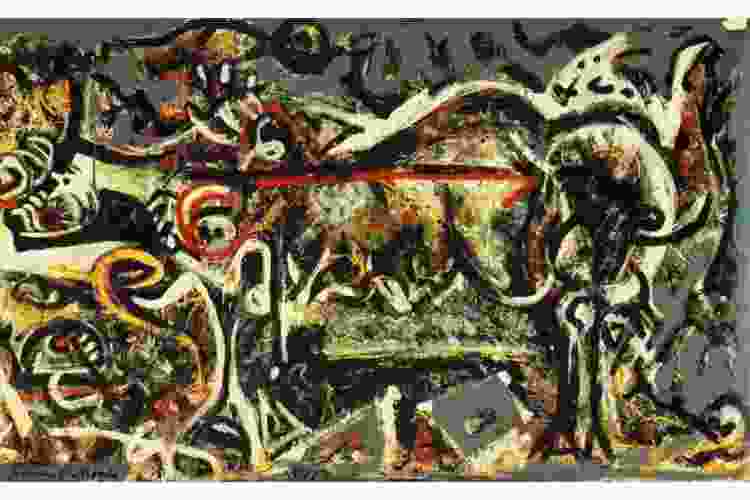
The She-Wolf is one of the early Jackson Pollock paintings that marks his transition into abstraction. This piece combines mythological themes with Pollock’s developing style of bold, gestural brushstrokes. The wolf-like figure is an allusion to the myth of Romulus and Remus, symbolizing the primal, untamed forces of nature.
Pollock used thick layers of paint to suggest both animal and human forms, creating an enigmatic and complex composition. This painting shows Pollock’s early interest in Jungian symbolism and archetypes, which would influence his later, more abstract works. Currently, The She-Wolf is housed in the Museum of Modern Art (MoMA) in New York City.
2. Mural (1943)
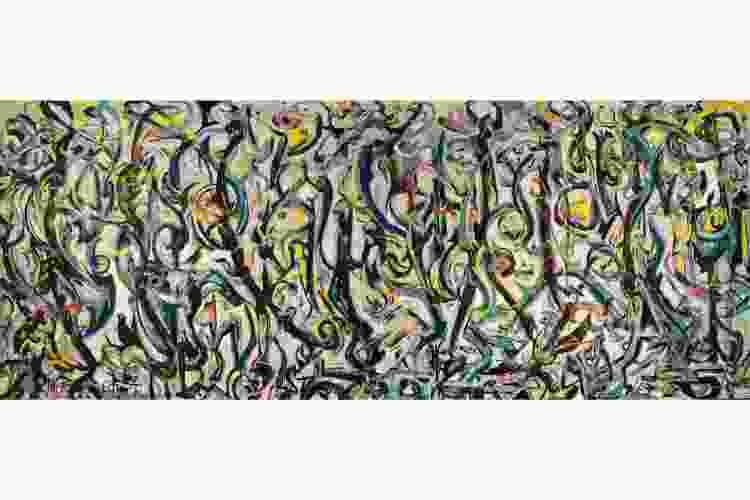
Mural was a turning point in Jackson Pollock’s career, commissioned by Peggy Guggenheim for her New York City townhouse. This massive painting spans nearly 20 feet and is considered one of the first major Jackson Pollock paintings to embrace the sweeping, dynamic gestures that would define his later "action painting" technique.
Its bold, rhythmic lines and energetic movement suggest an abstract representation of galloping horses, symbolizing boundless energy and freedom. Mural represents Pollock’s break from figuration toward abstraction, foreshadowing his iconic drip paintings. Today, it resides at the University of Iowa Stanley Museum of Art.
3. Full Fathom Five (1947)
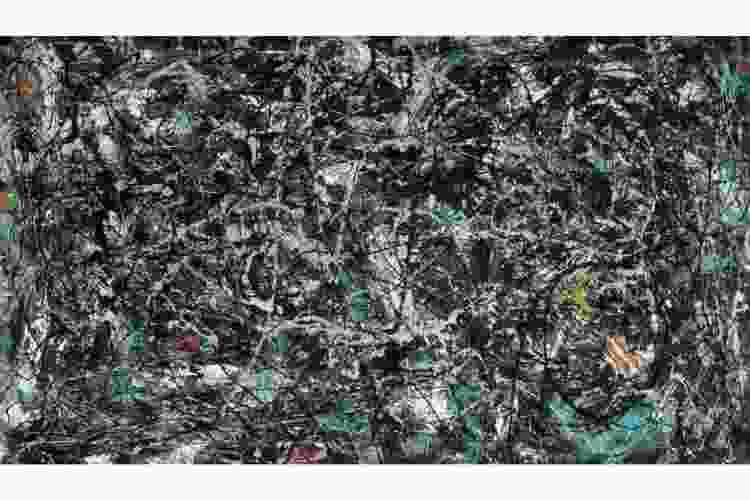
Full Fathom Five is one of the earliest Jackson Pollock paintings to showcase his revolutionary drip technique. Layers of enamel and oil paint are built up in a dense, intricate web of drips and splatters, creating a textured surface that includes embedded objects like nails, buttons and cigarette butts. The title, taken from Shakespeare's The Tempest, evokes imagery of the ocean's depths, hinting at the complexity and depth of the subconscious mind. This work demonstrates Pollock’s ability to transform chaotic gestures into a cohesive and powerful visual language. It is currently part of the collection at the Museum of Modern Art (MoMA) in New York City. Check it out on your next visit to the top NYC art galleries!
4. Number 17A (1948)
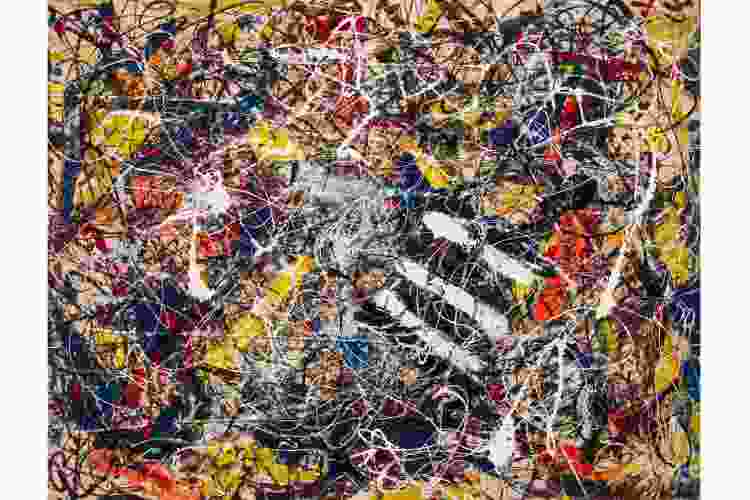
Number 17A is a prime example of Jackson Pollock’s "all-over" painting style, where the entire canvas is treated as an even field for dynamic, spontaneous action. Created during his peak drip-painting period, this piece is characterized by layers of swirling, looping lines that create a sense of movement and energy. The chaotic yet balanced composition is a hallmark of Pollock’s technique, showcasing his ability to create visual harmony through seemingly random gestures.
Number 17A exemplifies the bold abstraction that made Jackson Pollock paintings internationally renowned. Though it was sold privately for $200 million, it is not currently on public display.
5. Autumn Rhythm (Number 30) (1950)
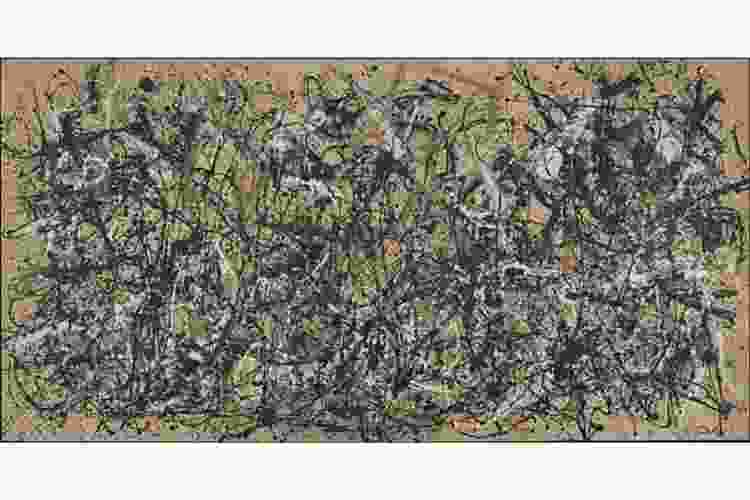
Autumn Rhythm (Number 30) is one of the most celebrated Jackson Pollock paintings, epitomizing his drip technique at its height. Spanning over eight feet, the canvas is covered in rhythmic, swirling lines of black, white and earthy tones, evoking the natural world in a highly abstract manner. The painting’s title suggests a seasonal theme, but the composition is open to interpretation, inviting viewers to immerse themselves in its complex, layered forms.
Autumn Rhythm embodies Pollock’s mastery of creating a sense of controlled chaos, capturing energy and movement in a static medium. It is displayed at the Metropolitan Museum of Art in New York City.
6. Number 1 (Lavender Mist) (1950)
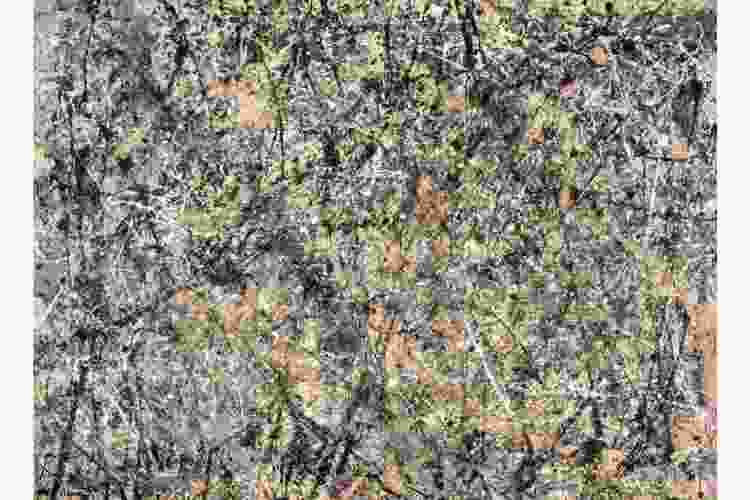
Number 1 (Lavender Mist) is one of Jackson Pollock’s most iconic paintings, showcasing his drip technique at its most intricate and refined. The soft, muted tones of lavender, blue and white create a misty, atmospheric effect, while the dynamic web of lines conveys movement and energy. Pollock used enamel and oil paints to build up the surface, creating a dense, textured composition that draws viewers into its depths.
This piece exemplifies the emotional and expressive power of Jackson Pollock paintings, where abstract forms evoke a sense of both chaos and harmony. As mentioned, it’s also one of his most expensive pieces. It is part of the collection at the National Gallery of Art in Washington, D.C.
7. One: Number 31 (1950)
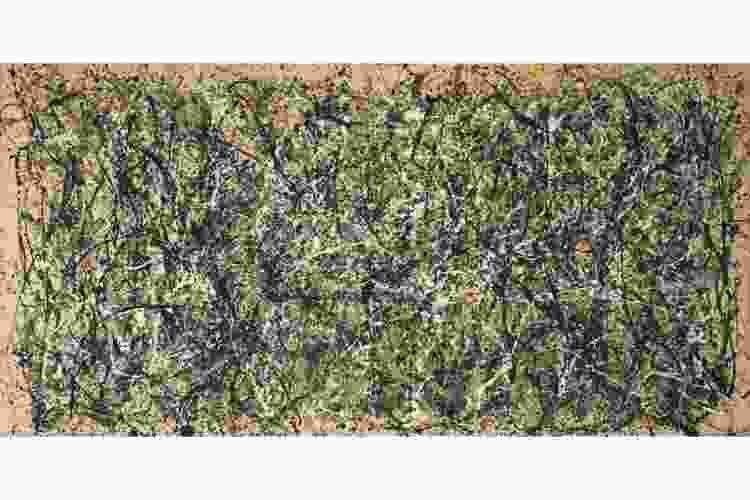
One: Number 31 is one of the largest and most striking Jackson Pollock paintings, stretching over 17 feet in width. It exemplifies his "all-over" painting technique, where no part of the canvas is left untouched. The dense network of drips and splashes creates an intense, swirling composition that pulses with energy. Pollock's use of a limited color palette, including blacks, whites and earth tones, enhances the painting’s sense of movement.
One: Number 31 is often regarded as one of Pollock’s masterpieces, showcasing his ability to transform spontaneous gestures into monumental works of art. It is housed at the Museum of Modern Art (MoMA) in New York City.
8. Blue Poles (Number 11) (1952)
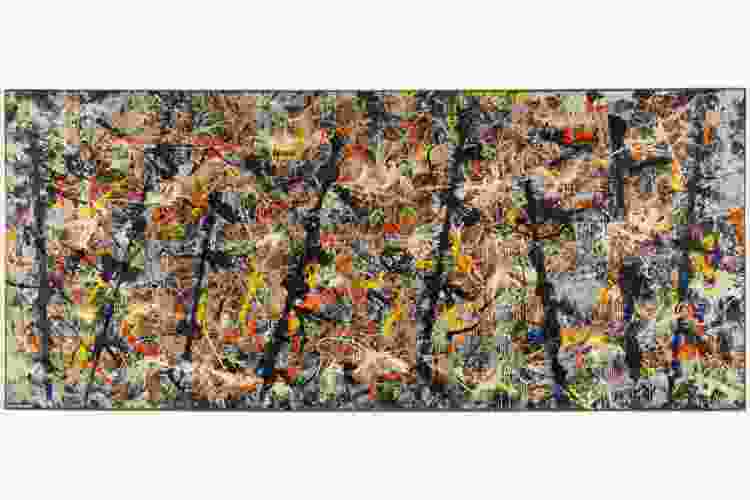
Blue Poles (Number 11) is one of the most famous Jackson Pollock paintings, distinguished by the eight bold blue vertical lines that punctuate the dense web of drips and splashes. Created during a period of personal and artistic transition, this painting is both chaotic and structured, with the blue poles serving as stabilizing elements within the composition.
The combination of vibrant colors and dynamic movement reflects Pollock’s mastery of Abstract Expressionism. Blue Poles remains one of Pollock’s most analyzed and celebrated works. It is currently on display at the National Gallery of Australia in Canberra. It’s a must-see down under.
9. Convergence (1952)
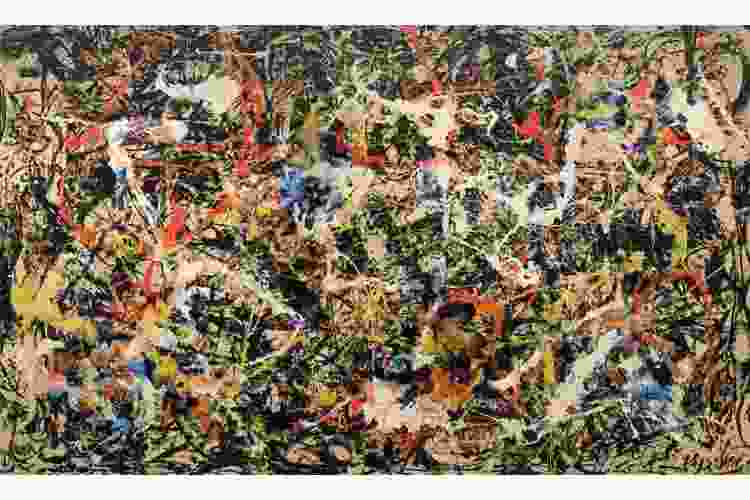
Convergence by Pollock is one of his most vivid and energetic paintings, created during a time when his use of color became much more experimental. The painting features a riot of bold, intersecting lines and splashes of red, yellow, blue and black, creating a sense of movement and a lot of intensity. The chaotic yet balanced composition is emblematic of Pollock’s ability to control the randomness of his drip technique, producing a work that feels both spontaneous and deliberate. Convergence is often seen as a reflection of the political and cultural tensions of the Cold War era. It is part of the collection at the Albright-Knox Art Gallery in Buffalo, New York.
10. Greyed Rainbow (1953)
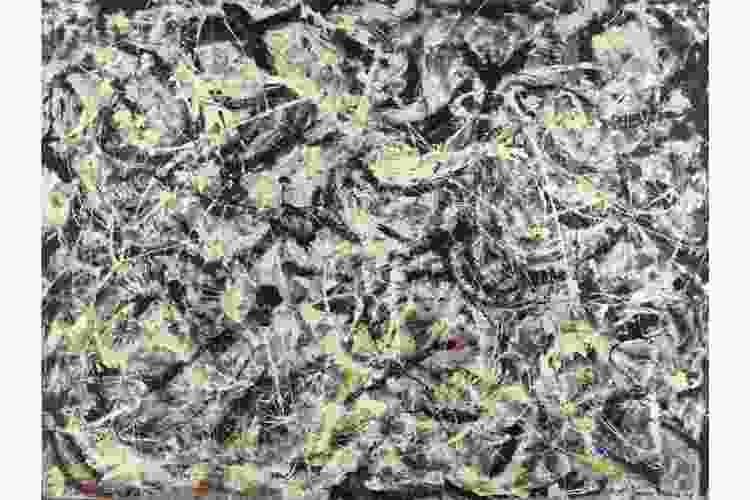
Greyed Rainbow is one of the more unique Jackson Pollock paintings, as it combines his signature drip technique with a more subdued color palette. The painting features a backdrop of muted grays and whites, overlaid with splashes of brighter colors like red, blue and yellow. The "rainbow" effect in the title is visible in the arcs and lines of color, though they are subdued by the gray tones, creating a sense of melancholy or tension. This work reflects Pollock’s evolving approach to abstraction in the later years of his career. Greyed Rainbow is displayed at the Art Institute of Chicago and is considered a midwest treasure.
11. Dripping 4
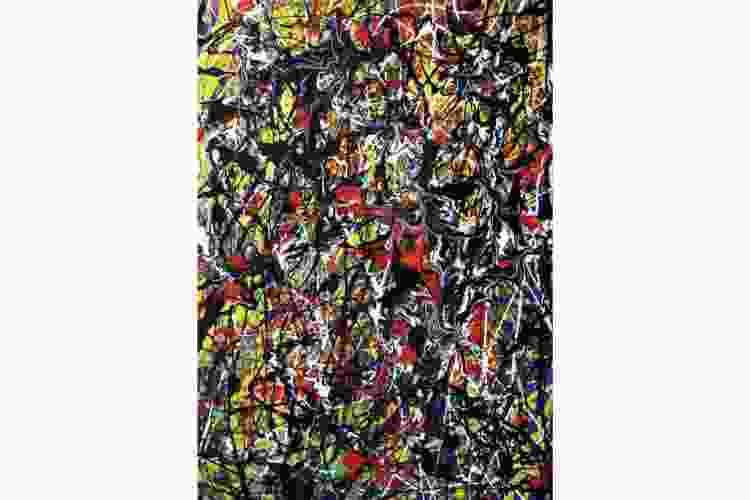
Dripping 4 exemplifies the signature style that Jackson Pollock paintings are known for, featuring dynamic, layered drips and splashes of paint across the canvas. The movement and energy in this piece reflect Pollock’s mastery of the "action painting" technique, where the artist's gestures directly translate into the work. The composition is spontaneous yet controlled, with the interplay of colors creating a sense of depth and texture.
Dripping 4 captures the essence of Pollock’s approach to Abstract Expressionism, where the process of creation is just as important as the final result. This painting is privately owned and not currently on public display.
12. No. 5 (1948)
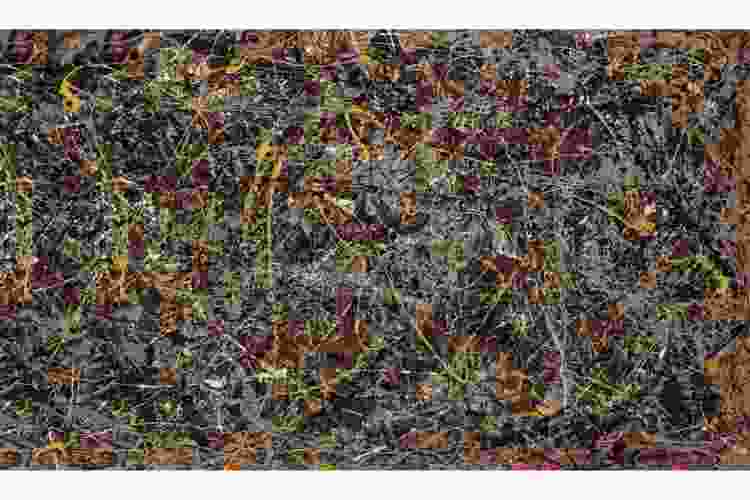
No. 5, 1948 is one of the most famous Jackson Pollock paintings, renowned for its dense, chaotic composition of drips and splashes. Created during Pollock’s peak period, this painting exemplifies his "all-over" technique, where every inch of the canvas is covered in a web of movement and energy.
The work is overwhelming at first, but the earthy tones of brown, yellow and gray give the painting a natural, organic feel, while the complex layering of paint creates a sense of depth. No. 5, 1948 became iconic not only for its technique but also for its status as one of the most expensive paintings ever sold, though it is privately owned and not on public display.
13. The Deep (1953)
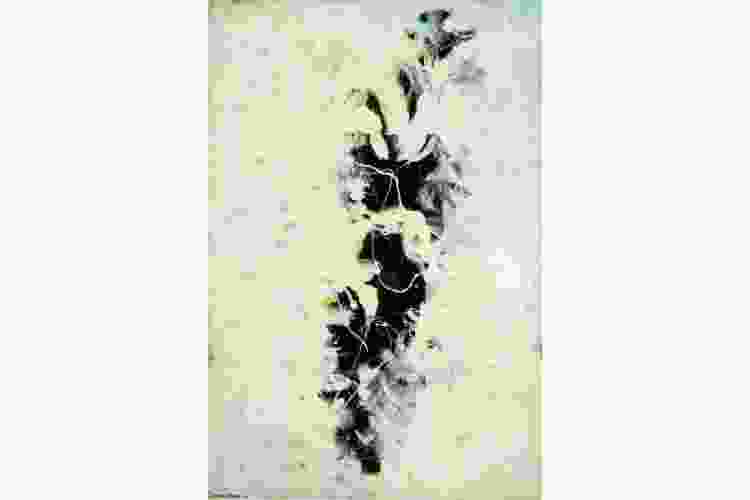
The Deep stands out among Jackson Pollock paintings for its somber tone and minimalist palette. Unlike his vibrant earlier works, this painting features large swaths of white with dark, jagged streaks of black and blue cutting through the canvas. The title suggests a plunge into the unknown or the subconscious, reflecting Pollock’s internal struggles during the later years of his life. The stark contrast between light and dark creates a sense of tension and isolation, making The Deep one of Pollock’s most introspective and emotionally charged works. It can be difficult to view knowing Pollocks struggle with the disease, but it is an extremely impactful piece. It is housed in the Center Pompidou in Paris.
14. Shimmering Substance (1946)
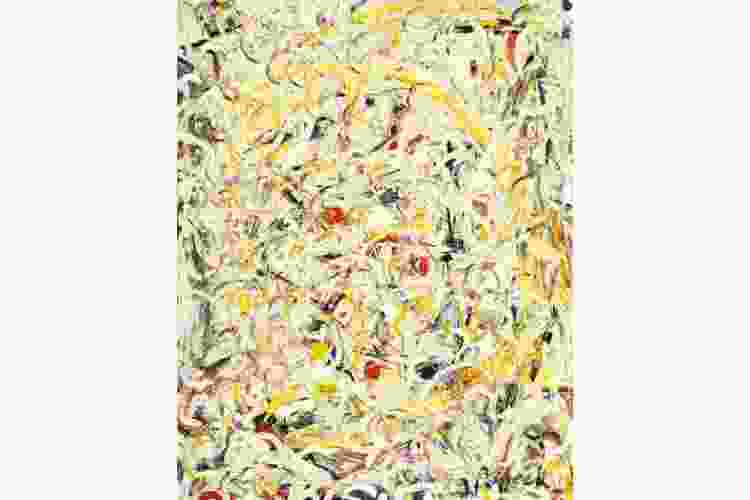
Shimmering Substance is one of the early Jackson Pollock paintings that hints at his later drip style while maintaining some elements of figuration. The painting’s vibrant colors and swirling forms evoke a sense of movement and light, as if capturing a fleeting moment of energy. The textured surface and interplay of yellow, blue and red create a shimmering effect, giving the painting its title. This work reflects Pollock’s transition from more structured compositions to the fluid, abstract style that would define his career. Shimmering Substance is part of the collection at the Museum of Modern Art (MoMA) in New York City.
15. Stenographic Figure (1942)
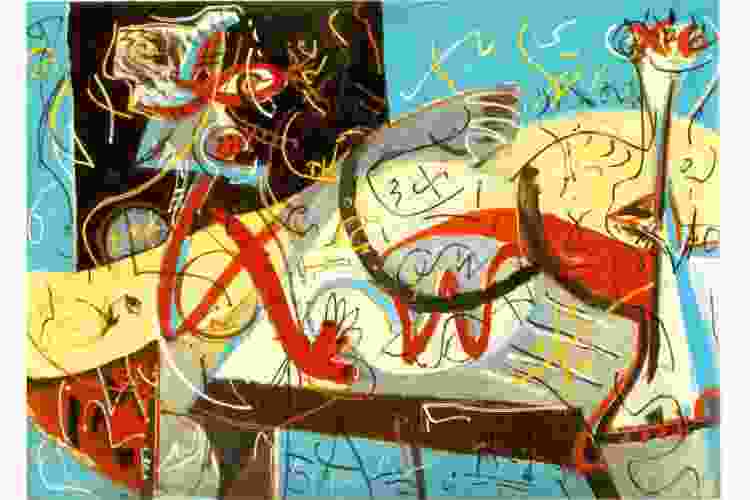
Stenographic Figure is one of the early Jackson Pollock paintings that blends figuration with abstraction. The canvas is filled with a variety of symbols, lines and shapes, suggesting human forms and language in a fragmented, chaotic manner. Pollock’s use of bright colors and large brushstrokes hints at the energy and spontaneity that would later define his drip paintings. The title refers to the stenographic symbols scattered across the canvas, representing communication in an abstract form.
Stenographic Figure marks a pivotal point in Pollock’s development as an artist, showing his early experiments with abstraction. It is housed at the Museum of Modern Art (MoMA) in New York City.
16. Guardians of the Secret (1943)
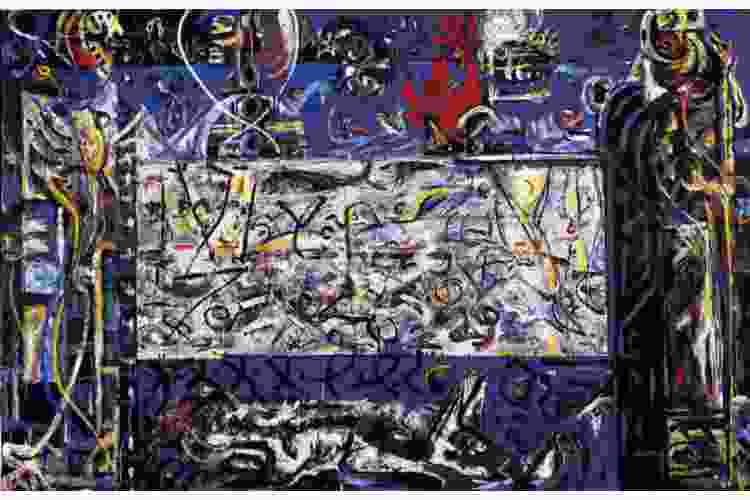
Guardians of the Secret is a striking early work that combines mythological symbolism with Pollock’s emerging abstract style. The painting features two figures standing on either side of a mysterious, central form resembling a hidden text or code. The composition is influenced by both Native American and ancient Egyptian art, with bold, linear forms that suggest ritualistic significance.
This work is one of the key Jackson Pollock paintings that shows his fascination with Jungian psychology and the idea of archetypes, foreshadowing his later abstract works. The juxtaposition of the figures and the central form creates a dynamic tension, evoking a sense of guarding or protecting hidden knowledge. Through this intricate layering of meaning, Pollock invites viewers to engage with the deeper psychological and spiritual dimensions of the work. This work is at the San Francisco Museum of Modern Art (SFMOMA).
17. Easter and the Totem (1953)

Easter and the Totem is one of the more structured Jackson Pollock paintings from his later career. The composition features bold vertical lines and totemic shapes that suggest a connection to ancient symbolism and ritual. The bright colors of red, yellow and blue contrast with darker, more muted tones, creating a sense of balance and tension. The title hints at themes of resurrection and spiritual renewal, while the abstract forms invite viewers to interpret the painting in their own way.
This work reflects Pollock’s continued exploration of mythological and psychological themes. The arrangement of shapes and colors fosters a sense of movement as if the totemic figures are alive and in dialog with each other. Pollock’s ability to merge structural elements with vibrant emotion makes this painting a compelling exploration of human experience and the search for meaning. This painting is located in the Museum of Modern Art (MoMA) in New York City, New York.
We recommend an art trip where you head out to see as many Jackson Pollock paintings as possible. Hit the Museum of Modern Art (MoMA) in New York City, the National Gallery of Art in Washington and maybe see if you can check out a privately owned piece. Now, you can appreciate the beauty of a Jackson Pollock painting and experience the wonders of his art for yourself.
For even more fun painting ideas, check out other experiences happening on Classpop!

